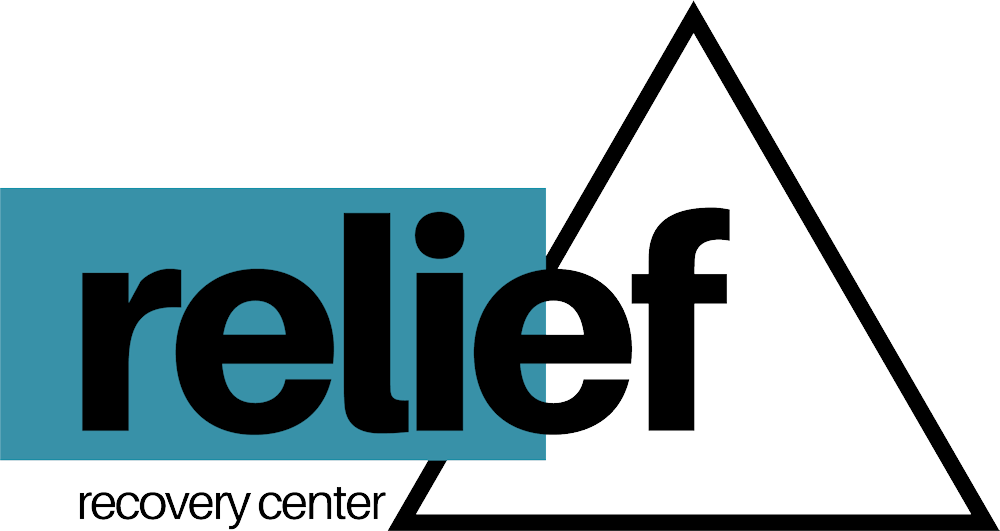Introduction
Dialectical Behavior Therapy (DBT) is a powerful tool in addiction treatment. Combining cognitive-behavioral techniques with mindfulness practices, DBT addresses the complex interplay between substance use and mental health issues.
Key takeaway: DBT therapy offers a comprehensive approach to support individuals in achieving lasting sobriety by addressing both their substance use and underlying mental health issues.
In this article, we’ll explore how DBT therapy helps treat addiction. We’ll highlight its key components and examine the specific techniques used to foster emotional regulation, distress tolerance, and overall well-being. Discover how incorporating DBT into addiction treatment can pave the way for a healthier, sober life.
Whether you’re seeking addiction rehab in Cape Cod, or looking for effective addiction therapy, understanding the role of DBT can significantly enhance your recovery journey.
Understanding DBT Therapy
Dialectical Behavior Therapy (DBT) is an evidence-based therapy originally developed by Dr. Marsha Linehan in the late 1980s. Initially designed to treat Borderline Personality Disorder, DBT has since been adapted for various mental health issues, including substance use disorders (SUD).
Key Components of DBT
DBT consists of several key components that work together to provide effective treatment:
- Individual Therapy: One-on-one sessions where therapists work with clients to address personal challenges and set goals.
- Group Skills Training: Weekly group sessions that teach core DBT skills such as mindfulness, emotional regulation, distress tolerance, and interpersonal effectiveness.
- Phone Coaching: Clients can call their therapist between sessions for support in applying DBT skills during crises or challenging situations.
- Consultation Team: Therapists meet regularly to discuss cases and support each other in providing effective treatment.
Integrating Cognitive-Behavioral Techniques with Mindfulness Practices
DBT uniquely combines cognitive-behavioral techniques with mindfulness practices. Cognitive-behavioral techniques focus on identifying and changing negative thought patterns and behaviors. Mindfulness teaches individuals to remain present and observe their thoughts and feelings without judgment. This blend helps clients manage intense emotions, reduce impulsive behaviors, and improve their overall mental health.
By addressing both the cognitive and emotional aspects of mental health, DBT offers a comprehensive approach that is particularly effective for individuals struggling with addiction.
The Role of DBT in Addiction Treatment
DBT therapy tackles substance use disorders by addressing both substance misuse and underlying mental health issues. This dual approach is crucial because many individuals struggling with addiction also face co-occurring disorders such as depression, anxiety, or PTSD.
Key Points on DBT’s Role:
- Integrated Treatment: DBT combines cognitive-behavioral techniques with mindfulness practices to help individuals manage their emotions and behaviors more effectively.
- Co-occurring Disorders: Treating these alongside addiction is vital for lasting sobriety. Addressing mental health issues reduces the likelihood of relapse, providing a more stable foundation for recovery.
- Research Findings: Studies highlight DBT’s effectiveness for those with substance use disorders (SUD). For instance, research shows that DBT can reduce relapse rates and improve emotional regulation, making it a powerful tool in recovery support.
By focusing on both the mind and behavior, DBT offers a comprehensive strategy to help individuals achieve and maintain sobriety. Explore 8 specific ways DBT can help in addiction recovery below.
1. Enhancing Emotional Regulation through DBT
Practical Exercises Used in DBT to Enhance Emotional Control
Mindfulness Meditation for Emotional Awareness
Mindfulness meditation is a cornerstone of DBT therapy, designed to help individuals develop emotional awareness and control. By practicing mindfulness, individuals can learn to observe their emotions without judgment or impulsive reactions, which is crucial for managing cravings and preventing relapse.
- How it works: During mindfulness meditation, individuals focus on their breath, bodily sensations, or other anchors, allowing them to stay present in the moment.
- Benefits: This practice helps in recognizing emotions as they arise, reducing the tendency to react impulsively. It fosters a non-judgmental attitude toward one’s feelings, making it easier to manage intense emotions without resorting to substance use.
- Example exercise: A simple mindfulness exercise involves sitting quietly and focusing on breathing for five minutes. When thoughts or emotions arise, acknowledge them without judgment and gently return attention to the breath.
Opposite Action: Acting Contrary to Emotion-Driven Urges for Better Outcomes
Opposite action involves intentionally engaging in behaviors opposite to what one’s emotions urge them to do.
- How it works: If someone feels like isolating themselves due to sadness, they might choose instead to reach out for social support.
- Benefits: This skill helps disrupt harmful behavioral patterns driven by negative emotions. It encourages proactive responses that align with long-term goals of sobriety.
- Example application: An individual feeling overwhelming anger might choose calming activities like walking or listening to soothing music rather than acting on aggressive impulses.
DBT therapy provides practical tools like these that not only enhance emotional regulation but also support lasting sobriety by equipping individuals with effective coping mechanisms.
2. ABC Model for Emotion Regulation: Understanding the Connection Between Thoughts, Feelings, and Behaviors
The ABC model is a cognitive restructuring technique that is commonly used in DBT therapy. This approach helps individuals understand the connection between their thoughts, feelings, and behaviors. Moreover, it’s a powerful tool for emotional regulation and distress tolerance, which is particularly beneficial in addiction recovery.
Components of the ABC Model
- Activating Event (A): This refers to any event or situation that triggers an emotional response. For example, encountering a stressful situation at work may serve as an activating event.
- Beliefs (B): These are the thoughts and interpretations we have about the activating event. For instance, if one believes they are inadequate at their job, this belief can intensify negative emotions.
- Consequences (C): These are the emotional and behavioral responses resulting from our beliefs about the activating event. As a result, feeling anxious or resorting to substance use as a coping mechanism are examples of such consequences.
Benefits of the ABC Model in Addiction Recovery
By identifying and challenging unhelpful beliefs, individuals can begin to alter the consequences they experience. Consequently, this cognitive restructuring enhances emotional awareness and helps develop healthier coping strategies. The importance of emotional regulation in addiction recovery cannot be overstated; in fact, it directly relates to managing cravings and triggers effectively. Ultimately, the ABC model equips individuals with emotion regulation skills training that fosters long-term sobriety.
3. Opposite Action: Acting Contrary to Emotion-Driven Urges for Better Outcomes
The opposite action skill is a powerful tool in DBT therapy that aids in emotional regulation and distress tolerance. This skill involves intentionally engaging in behaviors that are opposite to what one’s emotions may urge them to do. For instance, if someone feels isolated, their natural reaction might be to withdraw further. Using the opposite action skill, they would instead reach out for support.
Benefits of Opposite Action in DBT
- Emotional Awareness: DBT teaches individuals to become more aware of their emotions and develop healthy coping strategies to manage them effectively.
- Coping Mechanisms: By acting contrary to emotion-driven urges, individuals can build resilience against cravings and triggers associated with addiction.
- Practical Application: Imagine feeling intense anger during a stressful situation. Rather than lashing out, the opposite action could involve taking a few deep breaths and calmly addressing the issue.
Engaging in these counterintuitive behaviors helps break the cycle of negative emotional responses and fosters healthier, more adaptive coping mechanisms. This is crucial for those on the path to lasting sobriety as it empowers them with practical tools to navigate their emotional landscape more effectively.
4. Building Distress Tolerance Skills with DBT Techniques
The 5-4-3-2-1 Grounding Exercise: Bringing Focus Back to the Present Moment During Crises or Urge Episodes
Distress tolerance skills training is a cornerstone of DBT, offering individuals practical tools to manage crises and reduce the likelihood of relapse. One particularly effective method is the 5-4-3-2-1 grounding exercise.
This technique helps redirect attention away from overwhelming emotions or urges by engaging the senses. Here’s how it works:
- 5 Things You Can See: First, look around and identify five things you can see. Describe them in detail, focusing on colors, shapes, and textures.
- 4 Things You Can Touch: Next, identify four things you can physically touch. Notice their texture and temperature, whether they are soft, hard, warm, or cold.
- 3 Things You Can Hear: Then, listen closely and name three sounds you can hear. These might be background noises such as traffic, a ticking clock, or birds chirping.
- 2 Things You Can Smell: Next, pay attention to smells around you. Maybe it’s fresh coffee brewing or the scent of rain outside.
- 1 Thing You Can Taste: Finally, find something you can taste, like a piece of gum, or simply notice the taste inside your mouth.
Utilizing this exercise not only brings the focus back to the present moment but also diminishes the intensity of distressing thoughts and feelings.
Furthermore, these practical exercises are essential components within DBT that empower individuals to confront challenging situations without reverting to substance use as a coping mechanism.
Incorporating such grounding techniques into daily routines, therefore, fosters greater emotional resilience. As a result, it aids in long-term sobriety by providing reliable methods to handle stress effectively.
5. Radical Acceptance Practice: Embracing Reality Without Resisting It for Greater Peace of Mind During Challenging Times Like Relapse Triggers or Setbacks on One’s Sobriety Journey
Radical acceptance is a powerful tool within DBT therapy that empowers individuals to face distressing situations, such as cravings or setbacks, without judgment or avoidance. This advanced distress tolerance skill builds resilience by helping individuals recognize and accept their current reality, even if it’s painful or challenging.
Key aspects of radical acceptance include:
- Acknowledging Painful Situations: Instead of denying or fighting against uncomfortable emotions, radical acceptance encourages you to fully acknowledge them. This can be particularly helpful during high-stress situations where cravings might arise.
- Reducing Emotional Suffering: By accepting reality as it is, you can reduce the additional layer of suffering that comes from resisting or resenting your circumstances.
- Promoting Inner Peace: Embracing reality helps foster a sense of inner peace and calm, which is crucial for maintaining sobriety and managing relapse triggers.
Practicing radical acceptance can be transformative in addiction recovery, providing a solid foundation for handling crises and maintaining long-term sobriety.
6. Improving Interpersonal Effectiveness through DBT Strategies
DEAR MAN Technique for Assertive Communication
Communication plays a crucial role in maintaining sobriety and building healthy relationships. People in recovery often struggle to express their needs and set boundaries without being aggressive or passive. This is where the DEAR MAN technique comes in handy.
The DEAR MAN framework, an essential part of DBT, provides a systematic way to communicate assertively, which can be further enhanced through assertiveness training. Here’s how it works:
1. Describe
Clearly explain the situation without making judgments. For example, instead of saying, “You never listen to me,” rephrase it to, “When I talk about my day, I feel like you are not paying attention.”
2. Express
Share your feelings and thoughts about the situation. Example: “I feel ignored and unimportant when you look at your phone while I’m speaking.”
3. Assert
Directly state what you need or want. Example: “I would appreciate it if you could put your phone down when we’re having a conversation.”
4. Reinforce
Highlight the positive outcomes of meeting your request. Example: “If we communicate better, I feel our relationship will grow stronger.”
5. Mindful
Stay focused on your goal during the conversation. Avoid distractions and keep bringing the discussion back on track if it strays.
6. Appear Confident
Use a calm and confident tone of voice, maintain eye contact, and adopt open body language.
7. Negotiate
Be willing to compromise or find alternative solutions if necessary. Example: “If putting your phone down immediately isn’t possible, can we agree on specific times for uninterrupted conversations?”
In addiction recovery, using DEAR MAN helps individuals navigate conflicts and relationship struggles that may arise due to substance use challenges. It empowers them to express their needs clearly while respecting others’ boundaries.
Practical Application in Addiction Recovery
Imagine someone in recovery feeling stressed because their partner constantly checks their phone during important conversations. By applying DEAR MAN:
- They describe the scenario without blaming.
- Express how this behavior affects them emotionally.
- Assertively ask for undivided attention during talks.
- Reinforce why this change benefits both parties.
- Stay mindful of their goal amidst potential distractions.
- Maintain a confident demeanor.
- Show willingness to negotiate timings or conditions.
This method not only fosters healthier interpersonal relationships but also reinforces self-respect and mutual understanding—key components in achieving lasting sobriety.
Using strategies like DEAR MAN, those in recovery can build stronger connections with others while ensuring their own emotional well-being remains intact. Additionally, enhancing interpersonal communication skills through techniques such as these can further support individuals in their journey towards recovery and improved relationships.
7. Validation Skills Training: Cultivating Empathy Towards Oneself And Others In Recovery
Validation skills training within DBT focuses on enhancing interpersonal relationships in addiction recovery by promoting empathy and understanding. This training teaches individuals to:
- Acknowledge and accept their own feelings: Recognizing emotions like shame, guilt, or regret without judgment helps foster self-compassion and reduces the emotional burden tied to past substance use.
- Understand others’ perspectives: By validating others’ experiences and emotions, individuals can build healthier connections that act as a protective factor against relapse.
- Improve communication: Learning to express oneself assertively while respecting others’ boundaries is crucial for maintaining balanced relationships, especially in dynamics affected by substance abuse.
Through validation skills, DBT therapy supports the development of authentic, empathetic interactions, which are key components in the journey towards lasting sobriety.
If you or a loved one is struggling with addiction and could benefit from professional help, consider reaching out to Relief Recovery for support.
8. Fostering Mindfulness Practices Through Daily Routines Supported By DBT Principles To Strengthen Long-Term Sobriety Outcomes Beyond Just Coping Mechanisms Alone
Mindfulness meditation practice isn’t just something to do during therapy sessions; it becomes a pivotal part of daily life integration. Here’s how:
- Daily Rituals: Incorporate mindfulness exercises like mindful breathing, body scans, or mindful eating into your daily routine.
- DBT Principles in Action: Use mindfulness to observe and describe your experiences without judgment, which is essential for managing triggers and urges.
- Strengthening Awareness: Regularly practicing mindfulness enhances self-awareness and emotional regulation over time.
By embedding these practices into everyday life, individuals create a sustainable foundation for long-term sobriety.
Conclusion
In summary, DBT therapy provides a strong framework to support lasting sobriety by addressing both substance use and underlying mental health issues. Through a combination of emotional regulation, distress tolerance, interpersonal effectiveness, and mindfulness practices:
- Individuals learn to manage their emotions without turning to substance use.
- In addition, distress tolerance skills offer effective coping mechanisms for crisis situations.
- Furthermore, mindfulness practices promote a deeper awareness of thoughts and feelings.
At Relief Recovery Center, we are dedicated to offering personalized care that incorporates these DBT principles to assist our clients in achieving long-term sobriety in a supportive beachside setting. If you or a loved one are ready to start your recovery journey, contact Relief Recovery Center today.



